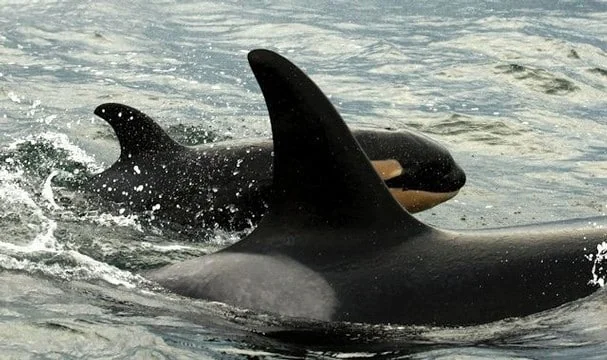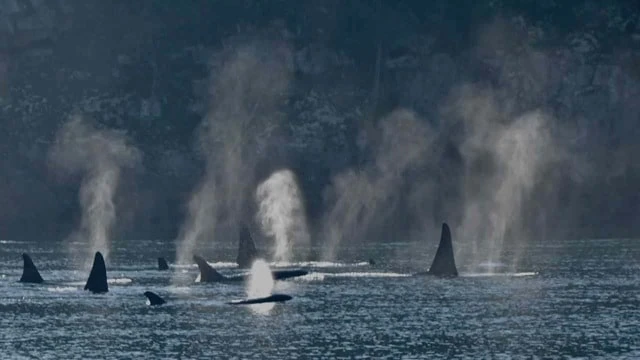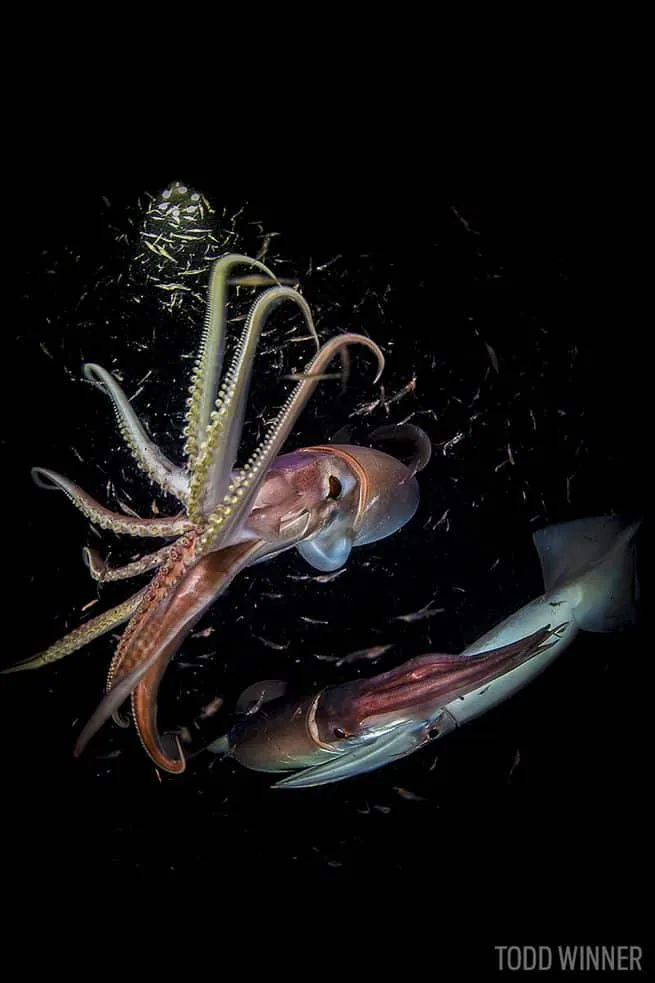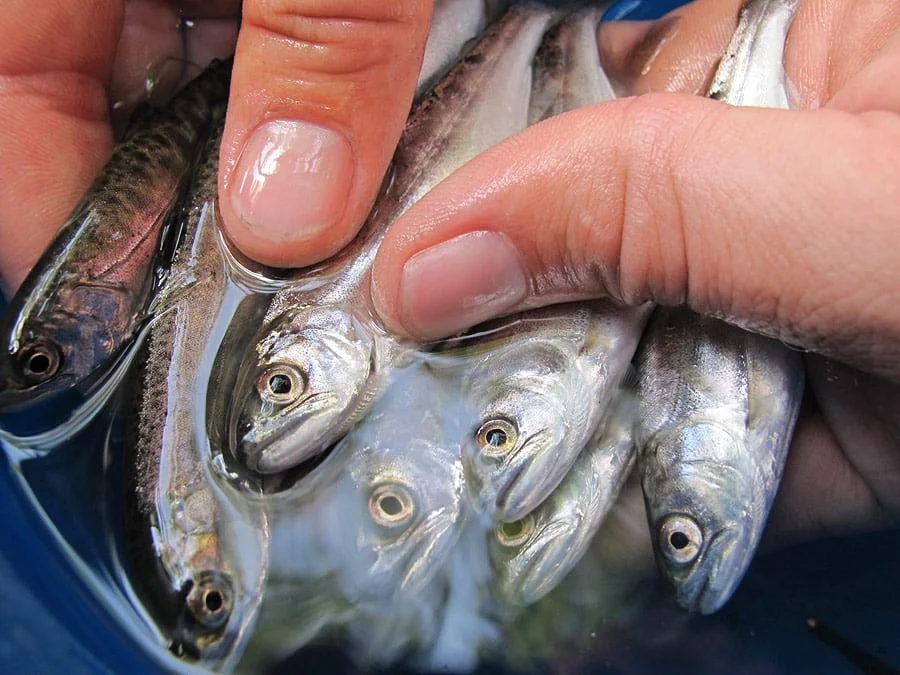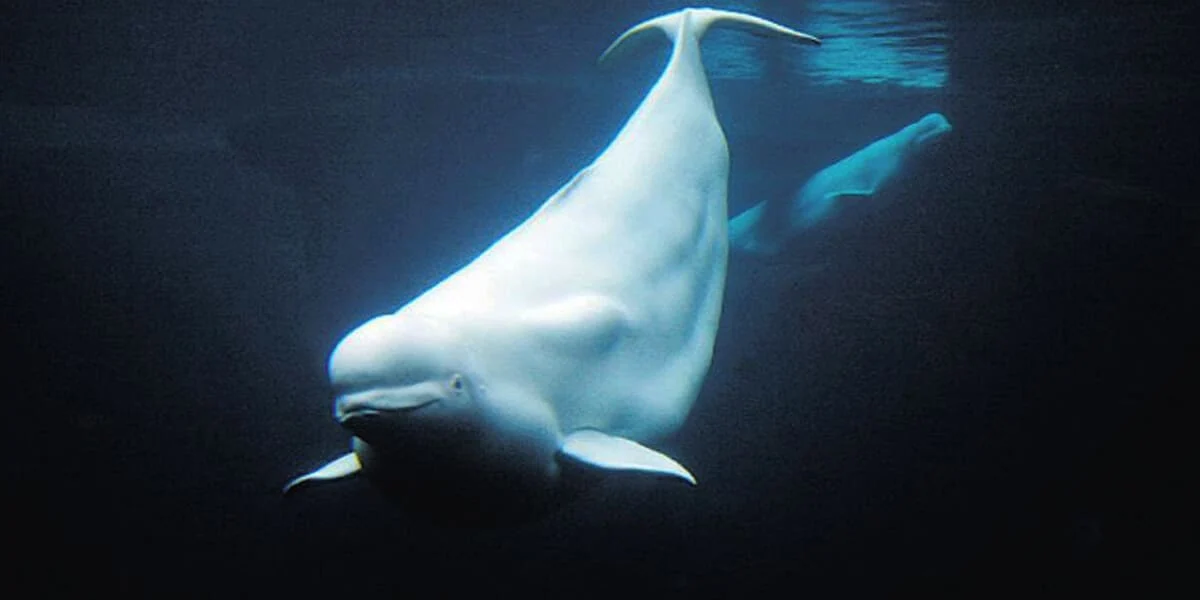New Baby Orca Whale in the San Juan Islands of Washington
The first baby orca of 2010 has been born to J pod on January 3, boosting an endangered population of killer whales that needs every birth it can get. The orca calf’s mother is only 12 years old, raising concern for the survival of both the mother and her calf. Killer whales don’t usually become reproductive until the age of 15. In 2009 there were five births and three deaths among the “southern resident” orca families of Washington. Three of the new babies were born into J pod, the family of killer whales that we kayak with most often in the San Juan Islands. We are optimistic that this ‘baby boom’ in J pod represents a comeback for our local orca whales.Look carefully at the photo and you will see new-born foetal folds and the distinctive orange color of a baby orca whale. The birth brings to 88 the population of southern resident killer whales that we enjoy seeing on our kayak tours in the San Juan Islands. Our local orcas were listed as endangered in November 2005 after experiencing a population drop of 20% between 1996 and 2001. The orca whales’ survival depends largely on another endangered species, the chinook salmon. To make matters worse, our local killer whales have been found to carry the highest concentrations of deadly pollutants of any animal. All of these threats are a direct result of human carelessness. The Center for Whale Research stated, “If the whales could talk to us, they would probably say that our effort to promote wild salmon recovery in the Pacific Northwest is good for all of us, so let’s do all that we can. And, let’s clean up the pollution, too, so we can all eat healthy fish.” Meanwhile, the “transient” killer whales that also use the San Juan Islands for hunting, have dramatically increased in recent years to more than 260. Transient orca whales feed mostly on seals and sea lions and do not interbreed with the resident-type killer whales. Genetic and behavioral studies suggest that although they look similar, they are actually distinct species. See the New Orca Babies on a Kayak Tour in the San Juan Islands

